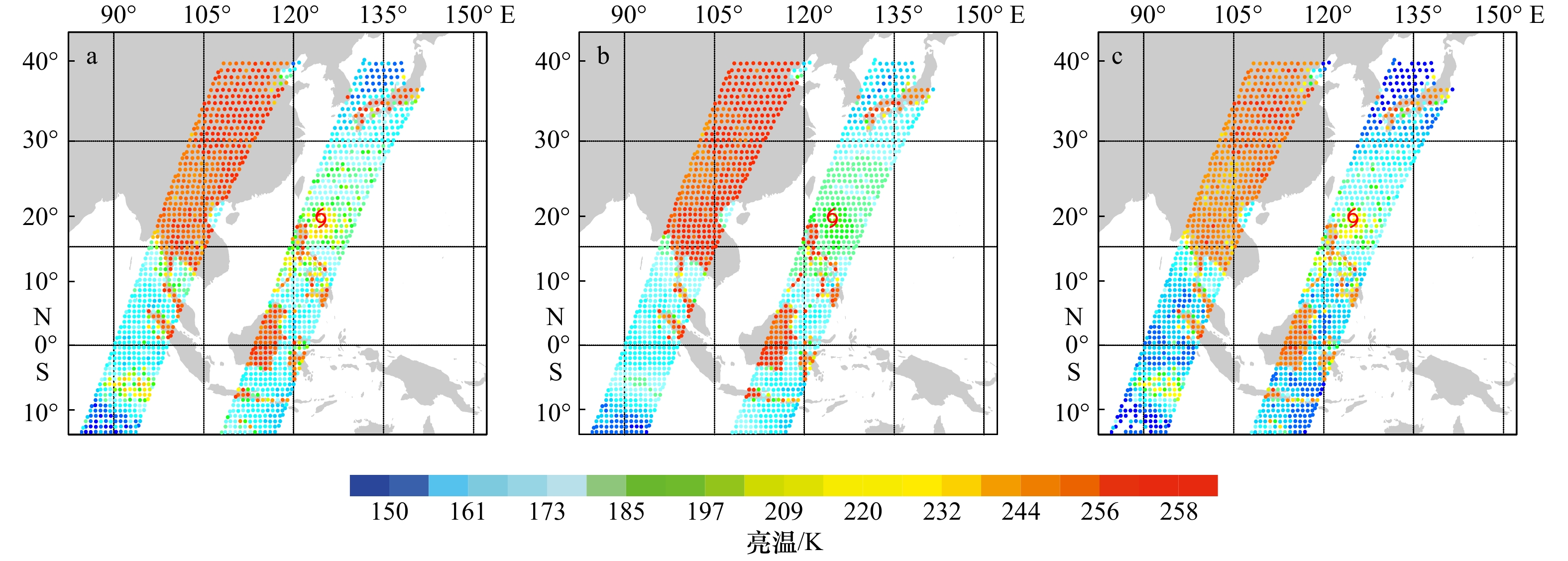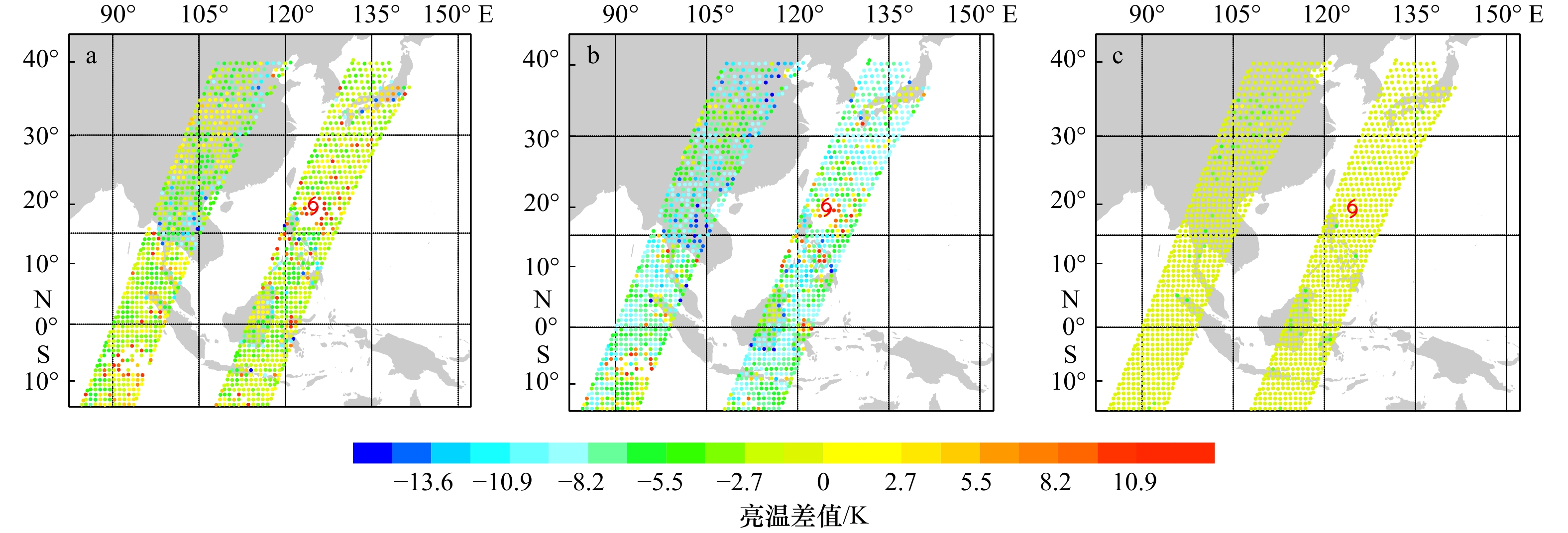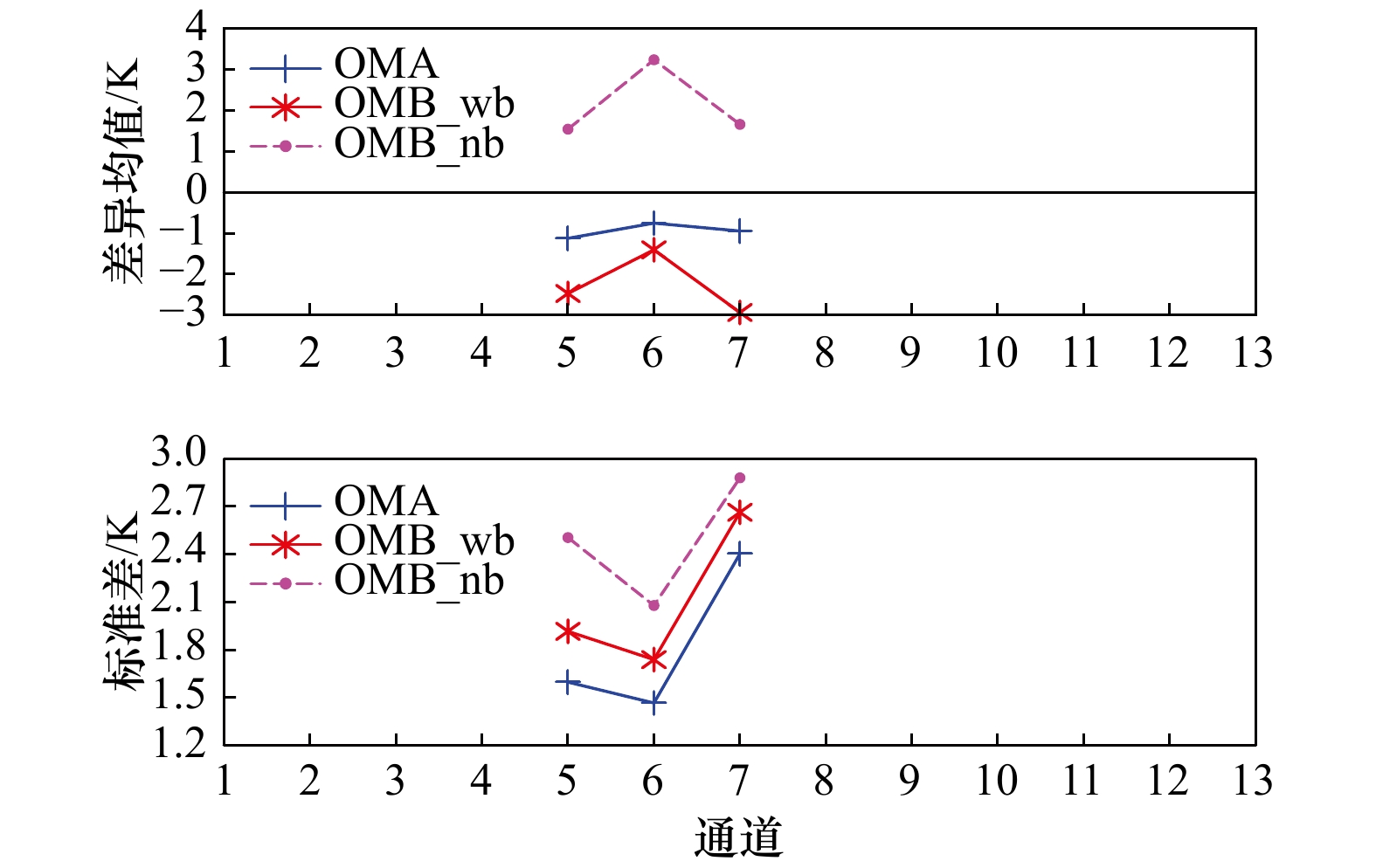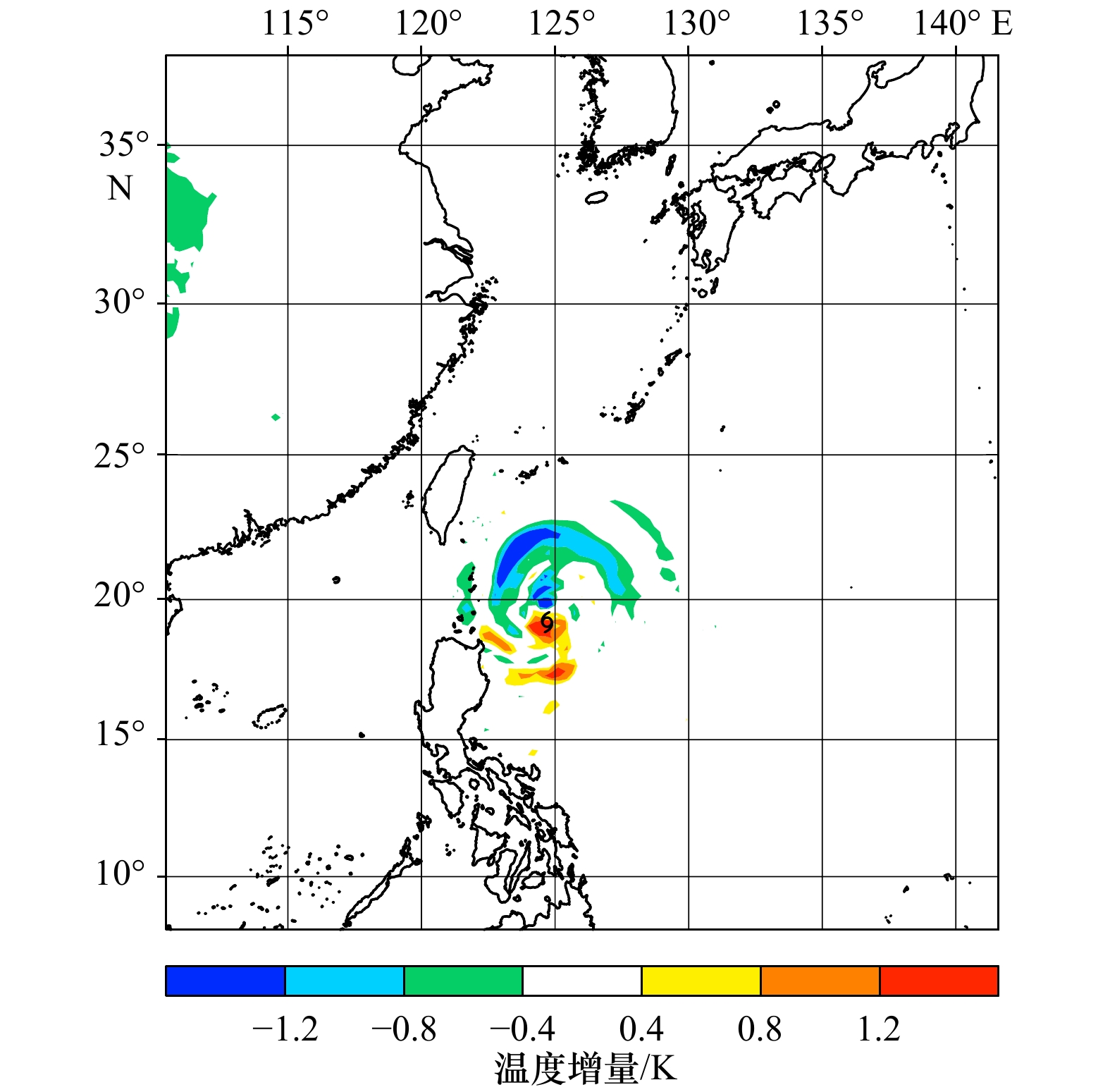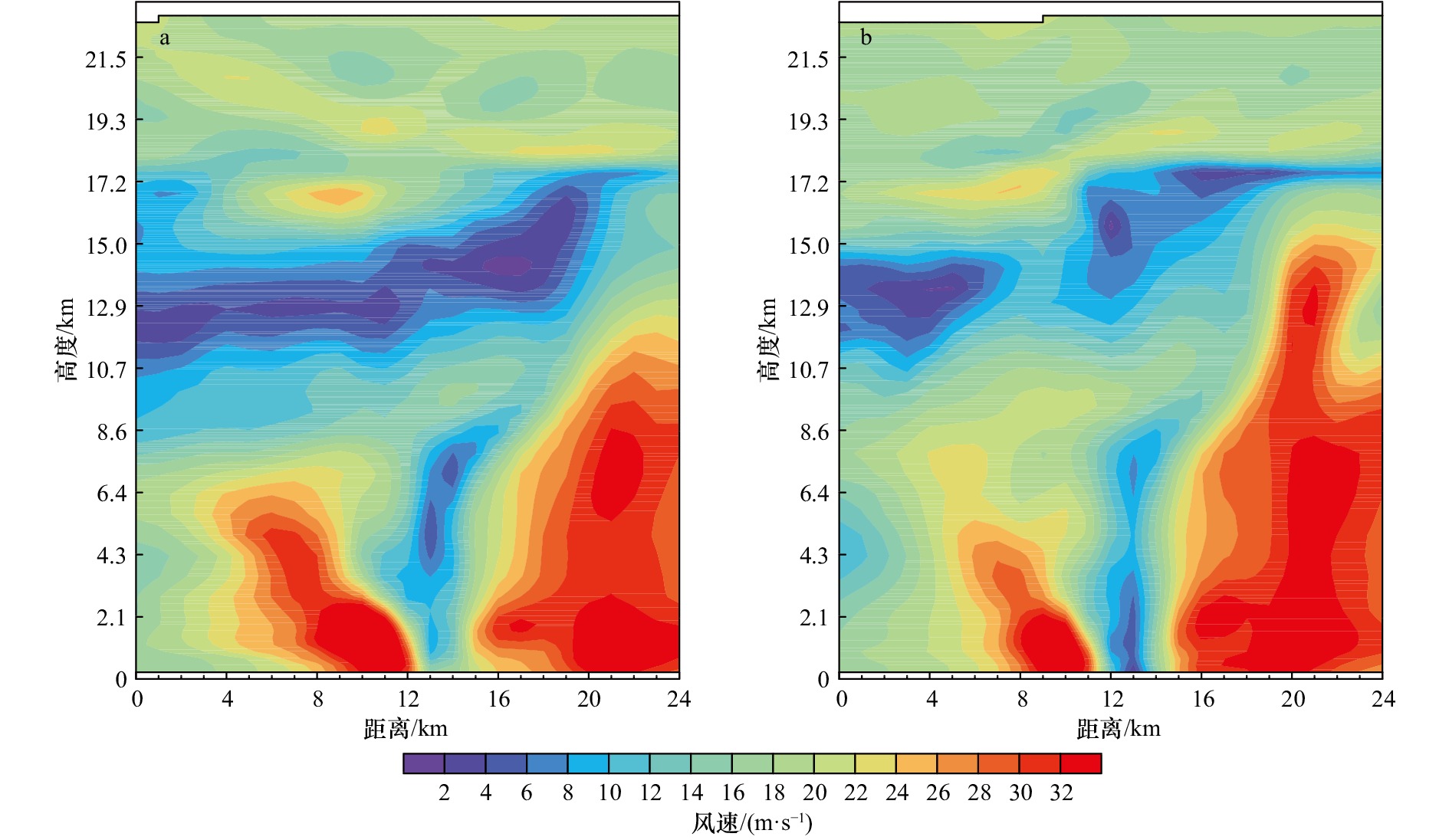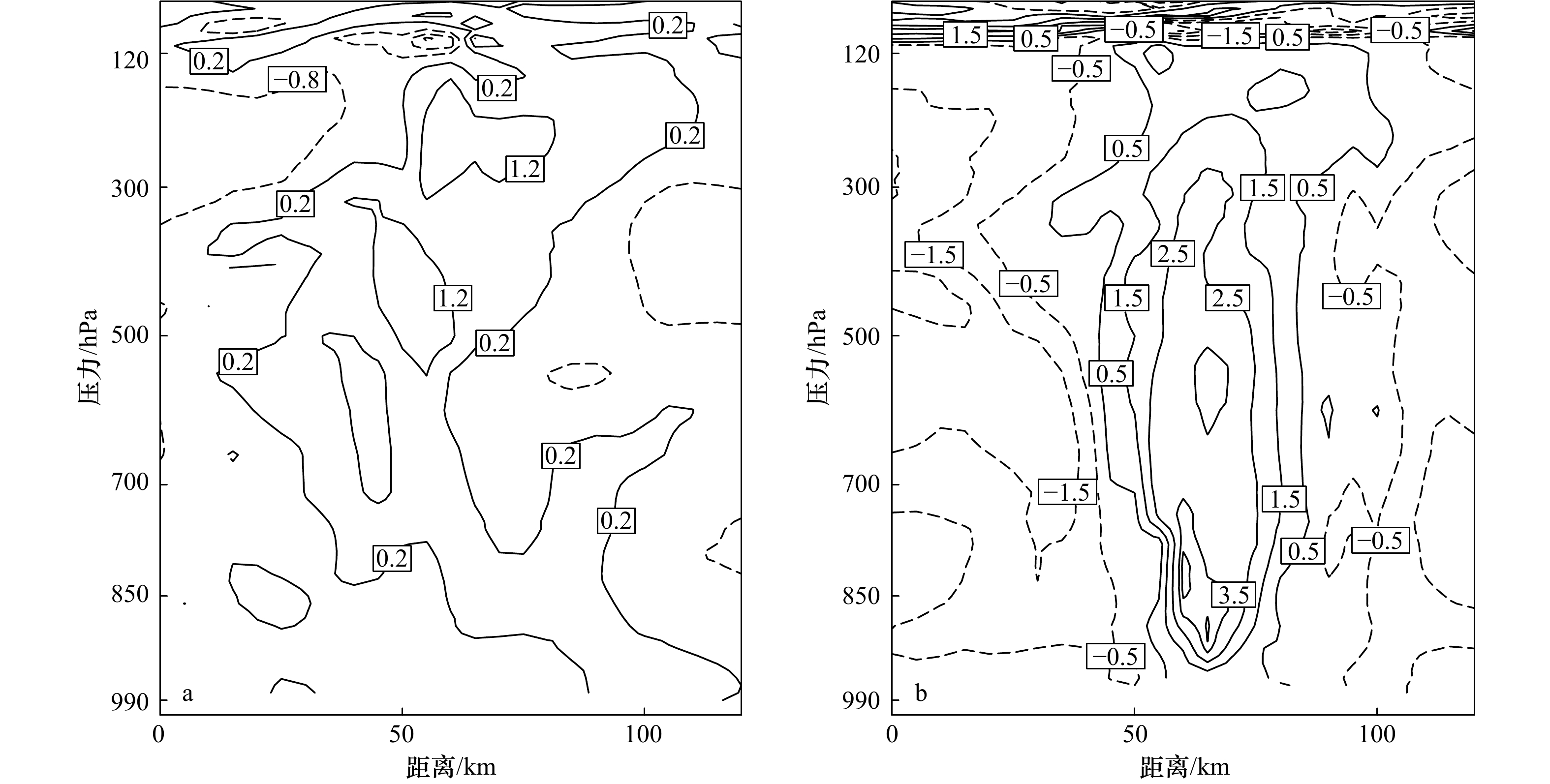Effect of data assimilation of GPM microwave imager on the track forecast of Typhoon Matmo
-
摘要: 基于中尺度数值模式WRF及其三维变分同化系统,自主构建了新的探测仪器GMI(Global Precipitation Measurement (GPM) Microwave Imager)的同化模块。本文以2014年太平洋台风季中台风“麦德姆”为例,实现了GMI资料在登陆台风中的有效应用。试验结果表明:晴空条件下GMI资料同化能够对模式背景场中的台风位置进行有效修正。与没有同化该资料的控制试验相比,同化GMI微波成像仪资料可以有效改进台风暖心结构的分析,同时使得台风涡旋环流结构增强,并进而提高了对台风路径的预报水平。
-
关键词:
- WRF模式 /
- GMI微波成像仪资料 /
- 三维变分同化 /
- 台风
Abstract: The interface of assimilating radiance on a new satellite sensor GMI (Global Precipitation Measurement (GPM) microwave imager) was constructed in the framework of the mesoscale numerical model WRF (Weather Research and Forecasting Model) and its three-dimensional variational assimilation system (3DVAR). The assimilation of GMI radiance data is applied for the typhoon system based on the case of typhoon Matmo in the Pacific typhoon season in 2014 before its landing. The results show that, after assimilating the GMI radiance data under the clear sky condition, the typhoon position in the background of the model is effectively corrected. The GMI data are able to improve the warm core structure of the typhoon when compared with the control experiment without assimilation and enhanced the typhoon vortex circulation structure at the same time. Data assimilating of GMI data further improves the forecast skills of the typhoon track. -
图 4 2014年7月21日16时GMI通道6偏差订正前观测亮温减去背景亮温(a),偏差订正后观测亮温减去背景亮温(b)和偏差订正后观测亮温减去分析亮温(c)
红色台风符号为该时刻的台风最佳观测
Fig. 4 The observed minus the simulated brightness temperature with the background before the bias correction (a), after the bias correction (b), and the observed minus the simulated brightness temperature with the analysis (c) for GMI channel 6 at 16:00 UTC on July 21, 2014
The red typhoon symbol is the best track location of the typhoon at 16:00 UTC on July 21, 2014
图 5 2014年7月21日16时GMI通道6偏差订正前观测与背景模拟亮温(a),偏差订正后观测与背景模拟亮温(b)和观测与分析模拟亮温(c)的散点分布
Fig. 5 The scatters of the observed and the simulated brightness temperature with the background before the bias correction (a), after the bias correction (b), and the observed and the simulated brightness temperature with the analysis (c) for GMI channel 6 at 16:00 UTC on July 21, 2014
图 6 2014年7月21日16时对应观测和模式的差异均值及标准差 (13个通道只给出同化的3个同化结果),其中OMB_nb:同化前未经偏差订正;OMB_wb:同化前经偏差订正;OMA:同化后
Fig. 6 The mean and standard deviation of the observed minus the simulated brightness temperature with the background before the bias correction (OMB_nb), after the bias correction (OMB_wb), and with the analysis (OMA) for GMI 3 channels assimilated at 16:00 UTC on July 21, 2014 for the 3 assimilated channels of the total 13 channels
图 7 2014年7月21日16时控制试验500 hPa位势高度(等值线)(a),同化试验500 hPa位势高度(等值线)(b)和500 hPa位势高度增量(等值线和阴影)(c)。图中红色台风符号为台风观测位置
Fig. 7 The 500 hPa geopotential height (contours) for the control experiment (a), the 500 hPa geopotential height (contours) for the assimilation experiment (b), and geopotential height analysis increment (contours and shaded) (c) at 16:00 UTC on July 21, 2014. The red typhoon symbol is the best track location of the typhoon
图 8 2014年7月21日16时500 hPa高度场和温度距平控制试验(a),同化试验(b),同化试验和控制试验差场(c)。图中蓝色台风符号为台风观测位置
Fig. 8 The geopotential height and the temperature anomaly at 500 hPa for the control experiment (a), the assimilation experiment (b), the difference between the assimilation experiment and control experiment (c). The blue typhoon symbol is the best track location of the typhoon at 16:00 UTC on July 21, 2014
图 10 2014年7月21日16时海平面气压(等直线,单位hPa)和近地面风速(矢量箭头,单位:m/s)控制试验(a),同化试验(b)和同化试验和控制试验差场(c)
Fig. 10 The sea level pressure (counters, unit: hPa) and surface wind speed (arrow, unit: m/s) for the control experiment (a), the assimilation experiment (b), and the difference between the assimilation experiment and control experiment (c) at 16:00 UTC on July 21, 2014
表 1 全球卫星降水计划微波成像仪传感器特性
Tab. 1 Global precipitatior measurement microwave imager sensor characteristics
通道 频率/GHz 偏振方式 扫描点/km 1, 2 10.65 V, H 19.4×32.2 3, 4 18.7 V, H 11.2×18.3 5 23.8 V 9.2×15.0 6, 7 36.5 V, H 8.6×15.0 8, 9 89.0 V, H 4.4×7.3 10, 11 166 V, H 4.4×7.3 12 183±3 V 4.4×7.3 13 183±7 V 4.4×7.3 表 2 全球卫星降水计划微波成像仪通道5,6,7的观测误差、云中液态水路径值和观测残差检验阀值
Tab. 2 The observation errors of channel 5, 6, 7 from global precipitation measurement microwave imager, cloud liquid water path check and quality control thresholds for absolute innovation
通道 观测误差 CLWP剔除标准 观测残差标准 5 1.60 0.25 8 6 1.18 0.10 6 7 2.67 0.10 6 -
[1] Derber J C, Wu W S. The use of TOVS cloud-cleared radiances in the NCEP SSI analysis system[J]. Monthly Weather Review, 1997, 126(8): 2287−2299. [2] McNally A P, Derber J C, Wu W, et al. The use of TOVS level-1b radiances in the NCEP SSI analysis system[J]. Quarterly Journal of the Royal Meteorological Society, 2000, 126(563): 689−724. doi: 10.1002/qj.49712656315 [3] Okamoto K, Derber J C. Assimilation of SSM/I radiances in the NCEP global data assimilation system[J]. Monthly Weather Review, 2006, 134(9): 2612−2631. doi: 10.1175/MWR3205.1 [4] Bauer P, Lopez P, Benedetti A, et al. Implementation of 1D+4D-Var assimilation of precipitation affected microwave radiances at ECMWF. I: 1D-Var[J]. Quarterly Journal of the Royal Meteorological Society, 2006, 132(620): 2277−2306. doi: 10.1256/qj.05.189 [5] Miyoshi T, Sato Y. Assimilating satellite radiances with a local ensemble transform Kalman filter (LETKF) applied to the JMA global model (GSM)[J]. SOLA, 2007, 3: 37−40. doi: 10.2151/sola.2007-010 [6] Sakamoto M, Christy J R. The influences of TOVS radiance assimilation on temperature and moisture tendencies in JRA-25 and ERA-40[J]. Journal of Atmospheric and Oceanic Technology, 2009, 26(8): 1435−1455. doi: 10.1175/2009JTECHA1193.1 [7] Goerss J. Impact of satellite observations on the tropical cyclone track forecasts of the navy operational global atmospheric prediction system[J]. Monthly Weather Review, 2009, 137(1): 41−50. doi: 10.1175/2008MWR2601.1 [8] Aravéquia J A, Szunyogh I, Fertig E J, et al. Evaluation of a strategy for the assimilation of satellite radiance observations with the local ensemble transform Kalman filter[J]. Monthly Weather Review, 2011, 139(6): 1932−1951. doi: 10.1175/2010MWR3515.1 [9] Hoppel K W, Eckermann S D, Coy L, et al. Evaluation of SSMIS upper atmosphere sounding channels for high-altitude data assimilation[J]. Monthly Weather Review, 2013, 141(10): 3314−3330. doi: 10.1175/MWR-D-13-00003.1 [10] Zou Xiaolei, Qin Zhengkun, Weng Fuzhong. Improved coastal precipitation forecasts with direct assimilation of GOES-11/12 imager radiances[J]. Monthly Weather Review, 2011, 139(12): 3711−3729. doi: 10.1175/MWR-D-10-05040.1 [11] Liu Zhiquan, Schwartz C S, Snyder C, et al. Impact of assimilating AMSU-A radiances on forecasts of 2008 Atlantic tropical cyclones initialized with a limited-area ensemble Kalman filter[J]. Monthly Weather Review, 2012, 140(12): 4017−4034. doi: 10.1175/MWR-D-12-00083.1 [12] Qin Zhengkun, Zou Xiaolei, Weng Fuzhong. Evaluating added benefits of assimilating GOES imager radiance data in GSI for coastal QPFs[J]. Monthly Weather Review, 2013, 141(1): 75−92. doi: 10.1175/MWR-D-12-00079.1 [13] Zhang Man, Zupanski M, Kim M J, et al. Assimilating AMSU-A radiances in the TC core area with NOAA operational HWRF (2011) and a hybrid data assimilation system: Danielle (2010)[J]. Monthly Weather Review, 2013, 141(11): 3889−3907. doi: 10.1175/MWR-D-12-00340.1 [14] Zhang S Q, Zupanski M, Hou A Y, et al. Assimilation of precipitation-affected radiances in a cloud-resolving WRF ensemble data assimilation system[J]. Monthly Weather Review, 2013, 141(2): 754−772. doi: 10.1175/MWR-D-12-00055.1 [15] Kazumori M. Satellite radiance assimilation in the JMA operational mesoscale 4DVAR system[J]. Monthly Weather Review, 2014, 142(3): 1361−1381. doi: 10.1175/MWR-D-13-00135.1 [16] Wang P, Li J, Goldberg M D, et al. Assimilation of thermodynamic information from advanced infrared sounders under partially cloudy skies for regional NWP[J]. Journal of Geophysical Research: Atmospheres, 2015, 120(11): 5469−5484. doi: 10.1002/2014JD022976 [17] Lin Haidao, Weygandt S S, Benjamin S G, et al. Satellite radiance data assimilation within the hourly updated rapid refresh[J]. Weather and Forecasting, 2017, 32(4): 1273−1287. doi: 10.1175/WAF-D-16-0215.1 [18] 郭云霞, 侯一筠, 齐鹏. Monte-Carlo模拟与经验路径模型预测台风极值风速的对比[J]. 海洋学报, 2020, 42(7): 64−77.Guo Yunxia, Hou Yijun, Qi Peng. Comparison of extreme wind speeds predicted by Monte-Carlo simulation and empirical track model[J]. Haiyang Xuebao, 2020, 42(7): 64−77. [19] 沈菲菲, 唐超, 许冬梅, 等. 基于不同背景场条件的雷达资料同化在登陆台风“桑美”中的应用研究[J]. 海洋学报, 2021, 43(1): 69−81.Shen Feifei, Tang Chao, Xu Dongmei, et al. Experiment of assimilating Doppler radar data in Typhoon Saomai based on the different initial conditions[J]. Haiyang Xuebao, 2021, 43(1): 69−81. [20] Xu D, Liu Z, Huang X Y, et al. Impact of assimilating IASI radiance observations on forecasts of two tropical cyclones[J]. Meteorology and Atmospheric Physics, 2013, 122: 1−18. doi: 10.1007/s00703-013-0276-2 [21] Zou X, Weng F, Zhang Banglin, et al. Impacts of assimilation of ATMS data in HWRF on track and intensity forecasts of 2012 four landfall hurricanes[J]. Journal of Geophysical Research: Atmospheres, 2013, 118(20): 11558−11576. [22] Zhang Hailing, Pu Zhaoxia. Influence of assimilating surface observations on numerical prediction of landfalls of Hurricane Katrina (2005) with an ensemble Kalman filter[J]. Monthly Weather Review, 2014, 142(8): 2915−2934. doi: 10.1175/MWR-D-14-00014.1 [23] Yang Chun, Liu Zhiquan, Bresch J, et al. AMSR2 all-sky radiance assimilation and its impact on the analysis and forecast of Hurricane Sandy with a limited-area data assimilation system[J]. Tellus A: Dynamic Meteorology and Oceanography, 2016, 68(1): 30917. doi: 10.3402/tellusa.v68.30917 [24] Xu Dongmei, Min Jinzhong, Shen Feifei, et al. Assimilation of MWHS radiance data from the FY-3B satellite with the WRF Hybrid-3DVAR system for the forecasting of binary typhoons[J]. Journal of Advances in Modeling Earth Systems, 2016, 8(2): 1014−1028. doi: 10.1002/2016MS000674 [25] Wu Tingchi, Zupanski M, Grasso L D, et al. The GSI capability to assimilate TRMM and GPM hydrometeor retrievals in HWRF[J]. Quarterly Journal of the Royal Meteorological Society, 2016, 142(700): 2768−2787. doi: 10.1002/qj.2867 [26] Hou A Y, Kakar R K, Neeck S, et al. The global precipitation measurement mission[J]. Bulletin of the American Meteorological Society, 2014, 95(5): 701−722. doi: 10.1175/BAMS-D-13-00164.1 [27] Kummerow C, Barnes W, Kozu T, et al. The tropical rainfall measuring mission (TRMM) sensor package[J]. Journal of Atmospheric and Oceanic Technology, 1998, 15(3): 809−817. doi: 10.1175/1520-0426(1998)015<0809:TTRMMT>2.0.CO;2 [28] Barker D, Huang Xiangyu, Liu Zhiquan, et al. The weather research and forecasting model’s community variational/ensemble data assimilation system: WRFDA[J]. Bulletin of the American Meteorological Society, 2012, 93(6): 831−843. doi: 10.1175/BAMS-D-11-00167.1 [29] 张卫民, 朱小谦, 赵军. 气象资料三维变分同化阶段区域分解并行实现[J]. 计算机研究与发展, 2005, 42(6): 1059−1064. doi: 10.1360/crad20050624Zhang Weimin, Zhu Xiaoqian, Zhao Jun. Implementation of phase domain decomposition parallel algorithm of three dimensional variational data assimilation[J]. Journal of Computer Research and Development, 2005, 42(6): 1059−1064. doi: 10.1360/crad20050624 [30] Parrish D F, Derber J C. The National Meteorological Center's spectral statistical-interpolation analysis system[J]. Monthly Weather Review, 1992, 120(8): 1747−1763. doi: 10.1175/1520-0493(1992)120<1747:TNMCSS>2.0.CO;2 [31] Migliorini S. On the equivalence between radiance and retrieval assimilation[J]. Monthly Weather Review, 2012, 140(1): 258−265. doi: 10.1175/MWR-D-10-05047.1 [32] 杨春, 闵锦忠, 刘志权. AMSR2辐射率资料同化对台风“山神”分析和预报的影响研究[J]. 大气科学, 2017, 41(2): 372−384. doi: 10.3878/j.issn.1006-9895.1608.16127Yang Chun, Min Jinzhong, Liu Zhiquan. The impact of AMSR2 radiance data assimilation on the analysis and forecast of typhoon son-tinh[J]. Chinese Journal of Atmospheric Sciences, 2017, 41(2): 372−384. doi: 10.3878/j.issn.1006-9895.1608.16127 [33] Dee D. Variational bias correction of radiance data in the ECMWF system[C]//Proceedings of ECMWF Workshop on Assimilation of High Spectral Resolution Sounders in NWP. Reading, United Kingdom: ECMWF, 2004: 97−112. [34] 刘志权, 张凤英, 吴雪宝, 等. 区域极轨卫星ATOVS辐射偏差订正方法研究[J]. 气象学报, 2007, 65(1): 113−123.Liu Zhiquan, Zhang Fengying, Wu Xuebao, et al. A regional ATOVS radiance-bias correction scheme for rediance assimilation[J]. Acta Meteorologica Sinica, 2007, 65(1): 113−123. [35] Hong S Y, Lim J O J. The WRF single-moment 6-class microphysics scheme (WSM6)[J]. Journal of the Korean Meteorological Society, 2006, 42(2): 129−151. [36] Tiedtke M. A comprehensive mass flux scheme for cumulus parameterization in large-scale models[J]. Monthly Weather Review, 1989, 117(8): 1779−1800. doi: 10.1175/1520-0493(1989)117<1779:ACMFSF>2.0.CO;2 [37] Zhang Chunxi, Wang Yuqing, Hamilton K. Improved representation of boundary layer clouds over the southeast Pacific in ARW-WRF using a modified Tiedtke cumulus parameterization scheme[J]. Monthly Weather Review, 2011, 139(11): 3489−3513. doi: 10.1175/MWR-D-10-05091.1 [38] Hong S Y, Noh Y, Dudhia J. A new vertical diffusion package with an explicit treatment of entrainment processes[J]. Monthly Weather Review, 2006, 134(9): 2318−2341. doi: 10.1175/MWR3199.1 [39] Iacono M J, Delamere J S, Mlawer E J, et al. Radiative forcing by long-lived greenhouse gases: Calculations with the AER radiative transfer models[J]. Journal of Geophysical Research: Atmospheres, 2008, 113(D13): D13103. doi: 10.1029/2008JD009944 [40] Chen Fei, Dudhia J. Coupling an advanced land surface-hydrology model with the Penn State-NCAR MM5 modeling system. Part I: Model implementation and sensitivity[J]. Monthly Weather Review, 2001, 129(4): 569−585. doi: 10.1175/1520-0493(2001)129<0569:CAALSH>2.0.CO;2 [41] Jiménez P A, Dudhia J, González-Rouco J F, et al. A revised scheme for the WRF surface layer formulation[J]. Monthly Weather Review, 2012, 140: 898−918. doi: 10.1175/MWR-D-11-00056.1 [42] 张爱忠, 齐琳琳, 纪飞, 等. 资料同化方法研究进展[J]. 气象科技, 2005, 33(5): 385−389, 393. doi: 10.3969/j.issn.1671-6345.2005.05.001Zhang Aizhong, Qi Linlin, Ji Fei, et al. Advancement in data assimilation method research[J]. Meteorological Science and Technology, 2005, 33(5): 385−389, 393. doi: 10.3969/j.issn.1671-6345.2005.05.001 [43] Wang Xuguang. Application of the WRF Hybrid ETKF-3DVAR data assimilation system for hurricane track forecasts[J]. Weather and Forecasting, 2011, 26(6): 868−884. doi: 10.1175/WAF-D-10-05058.1 -




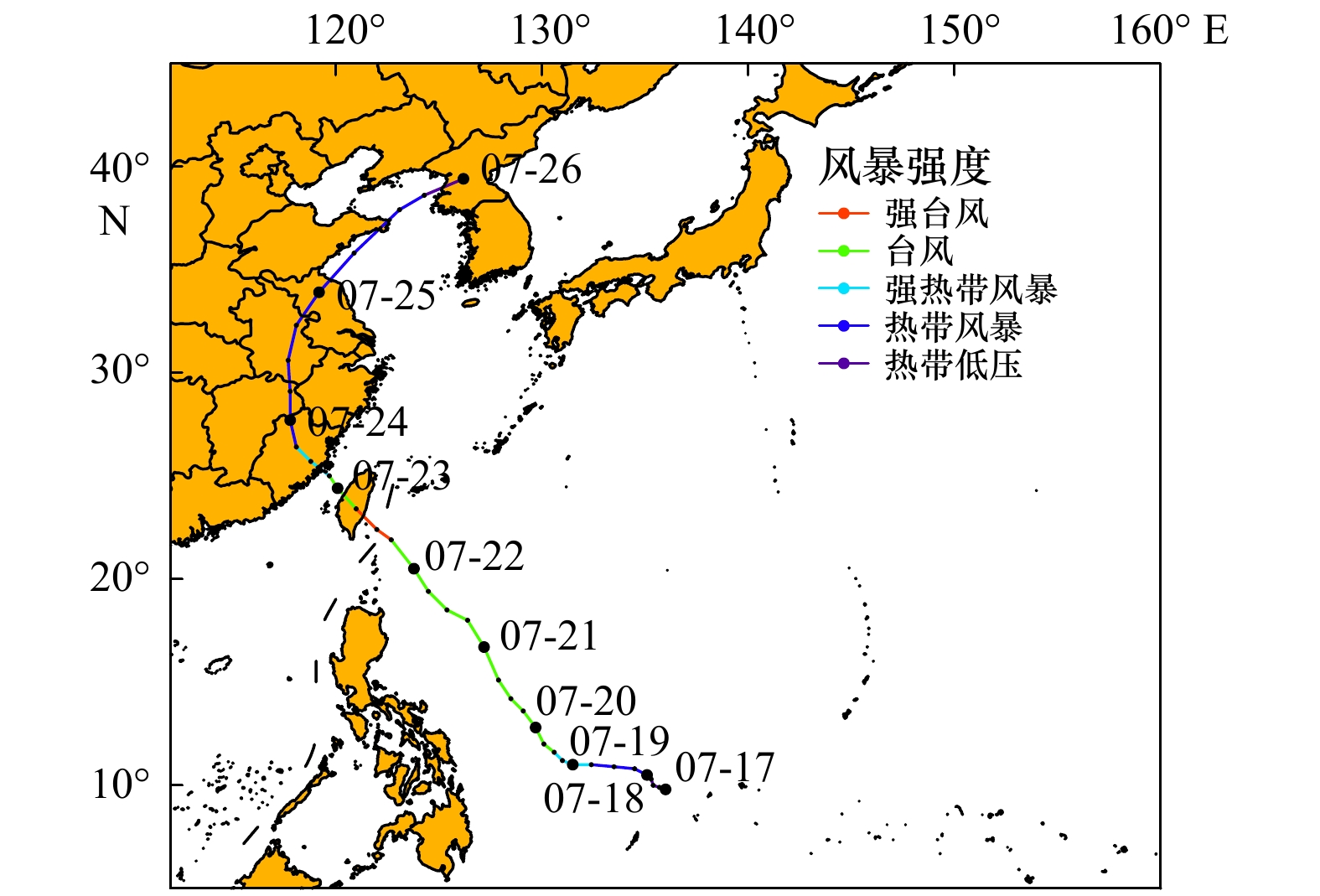
 下载:
下载:

